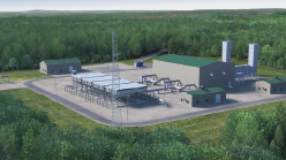The North American natural gas industry is facing a critical period over the next 10 to 15 years. Since 2000, the balance between natural gas supply and demand has tightened substantially. A number of important events have occurred recently in natural gas markets contributing to the tightening including:
- A decline of excess natural gas productive capacity or elimination of the “gas bubble”.
- The construction of over 200 GWs of gas-fired generation since 1999 with limited amounts of alternative fuel capability (oil backup),
- A rebound in the U.S. economy in 2003 after negative and slow growth in 2001 and 2002.
The objectives of this study are to examine infrastructure requirements with a focus on pipeline transmission capacity, storage capacity, and LNG terminal capacity. The study is conducted in the context of the changes in market fundamentals that have occurred since the INGAA Foundation published its studies of North American pipeline and storage infrastructure requirements in 1999 and in 2001. As in the previous studies, natural gas supply and demand requirements are examined as well as a detailed analysis of pipeline transmission and storage capacity requirements. For this study, a new element is considered. In recent years, a number of natural gas infrastructure projects have faced intense opposition from a number of disparate groups. There has been a ten-fold increase in protests and interventions in recent pipeline projects compared to a decade ago despite the significant progress that has been made to minimize both the temporary effects of construction and permanent environmental effects along the pipeline right-of-way. The result of this opposition to the construction of pipeline infrastructure is a risk that economically justified projects could be delayed – or not completed at all. This study will focus on the consequences of delay in the construction of needed infrastructure.





